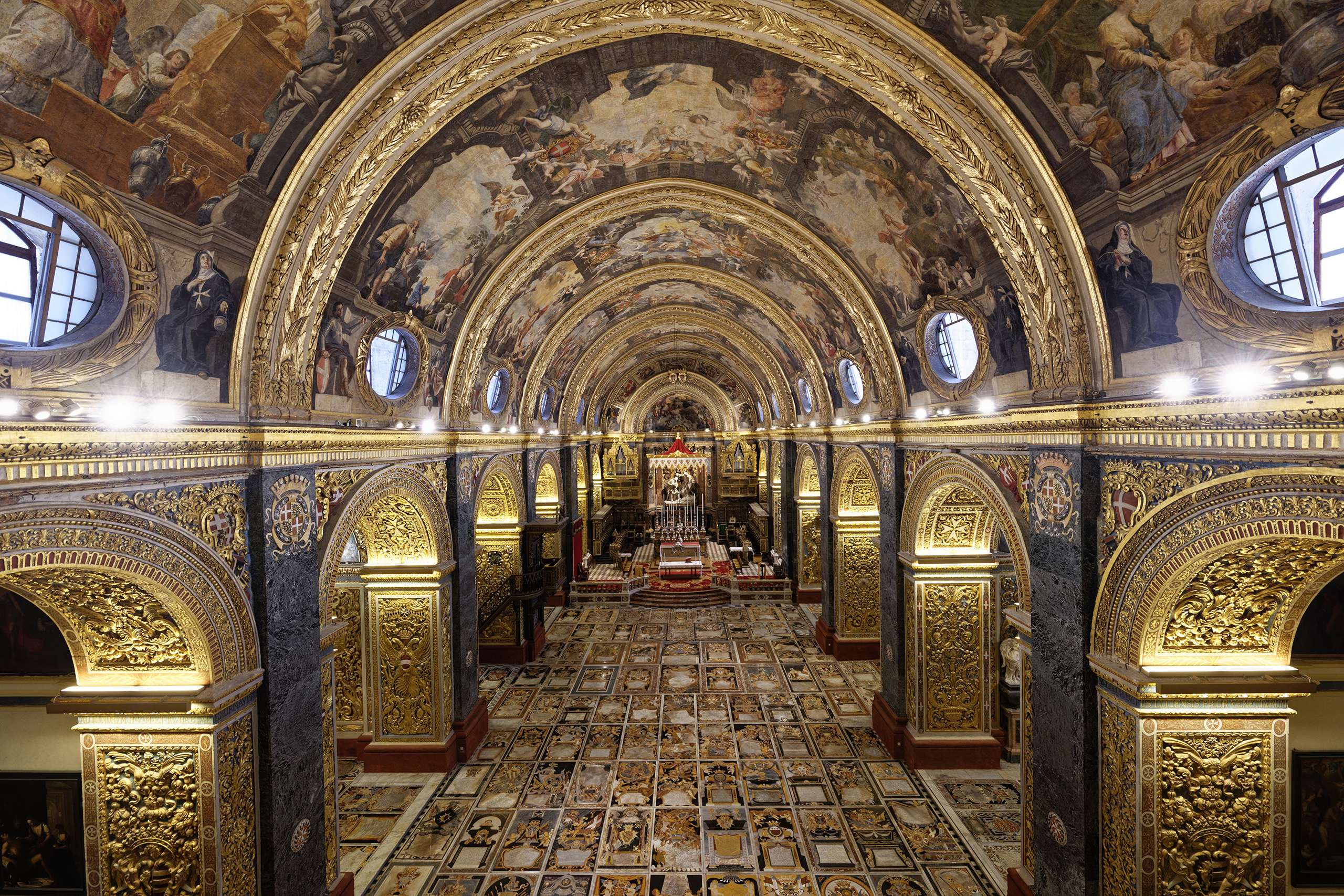Table of Contents
ToggleSt John’s Co Cathedral
A Masterpiece of Maltese Heritage
St John’s Co Cathedral in Valletta stands as one of Malta’s greatest cultural treasures, a monument that reflects the island’s layered history, artistic ambition, and spiritual legacy. Although modest in its external appearance, the cathedral’s interior reveals a breathtaking display of craftsmanship and devotion. It is recognized not only as a religious institution but also as a symbol of the Knights of St John and their enduring influence on Maltese identity. Visitors from around the world come to experience the grandeur of its art, architecture, and historical narrative, each of which contributes to its unmistakable character.
Origins and Historical Significance
The cathedral was commissioned shortly after the establishment of Valletta by the Knights of St John in the sixteenth century. At the time, the order sought a new conventual church that would reflect both their authority and their mission. Designed by the architect Girolamo Cassar, the structure was completed in an impressively short period. Its original form was austere, influenced by the sober military and religious principles of the knights.
Despite this restraint, the cathedral quickly became a central institution within the fortified city. It served not only as a place of worship but also as a venue for ceremonial functions, gatherings of the order, and expressions of collective identity. Over the years, numerous grand masters contributed to its embellishment, each adding elements that enhanced its visual and spiritual impact. This ongoing investment ensured that the cathedral evolved into a powerful statement of the order’s prestige.

A Dazzling Interior
The interior of St John’s Co Cathedral is one of the most remarkable artistic achievements in Europe. In contrast to its plain exterior, the inside space is defined by elaborate ornamentation and dramatic Baroque design. Vaulted ceilings are covered in detailed frescoes that depict episodes from the life of St John the Baptist. These works, painted by the artist Mattia Preti, are central to the cathedral’s identity and are recognized for their expressive composition and masterful execution.
The cathedral’s floors are another striking feature. Made of inlaid marble, the floor consists of hundreds of tombstones that commemorate members of the order. Each piece is a unique combination of heraldic symbols, inscriptions, and artistic elements. Together they form a vast mosaic that reflects both personal and collective stories, transforming the floor into a monumental historical document.
Gilded stone walls, sculpted altars, and intricate side chapels contribute to a sense of layered richness. Each chapel is dedicated to a different langue or regional group of the Knights of St John, and each represents its own artistic program. These spaces demonstrate the competitive spirit of the order, as each langue sought to express its identity and devotion through elaborate adornment.
The Caravaggio Masterpieces
Among the cathedral’s most celebrated assets are two paintings by Michelangelo Merisi da Caravaggio. The most famous is The Beheading of Saint John the Baptist, located in the Oratory. This work is widely regarded as one of Caravaggio’s greatest masterpieces and holds the distinction of being his only signed painting. Its dramatic composition, controlled use of light, and emotional intensity make it a focal point for visitors and scholars alike.
The second painting, Saint Jerome Writing, showcases Caravaggio’s powerful realism and mastery of shadow. Both works were produced during the artist’s turbulent stay in Malta, a period marked by both accomplishment and controversy. Their presence in the cathedral reinforces its status as a repository of world class art.

Preservation and Restoration
Given the historical and artistic value of the cathedral, ongoing preservation has been a priority. Comprehensive restoration programs have been undertaken to address environmental challenges, structural concerns, and the natural aging of materials. These efforts have included conservation of frescoes, cleaning of marble surfaces, and advanced work on Caravaggio’s paintings.
The cathedral’s museum and interpretive facilities have also expanded, supporting its mission to educate visitors about the heritage it protects. Through carefully planned conservation initiatives, St John’s Co Cathedral continues to be both a functioning place of worship and a world renowned cultural institution.
A Living Symbol of Malta
Today the cathedral stands as an emblem of Maltese identity. Its significance extends beyond religious practice, encompassing art history, architecture, and national heritage. It remains an active site for liturgical events while also functioning as a major attraction that draws scholars, tourists, and cultural enthusiasts.
Valletta itself is a UNESCO World Heritage City, and the cathedral contributes significantly to that designation. Its ability to communicate the history of the Knights of St John, and to preserve some of the finest Baroque art in the world, makes it an essential part of Malta’s cultural landscape.




